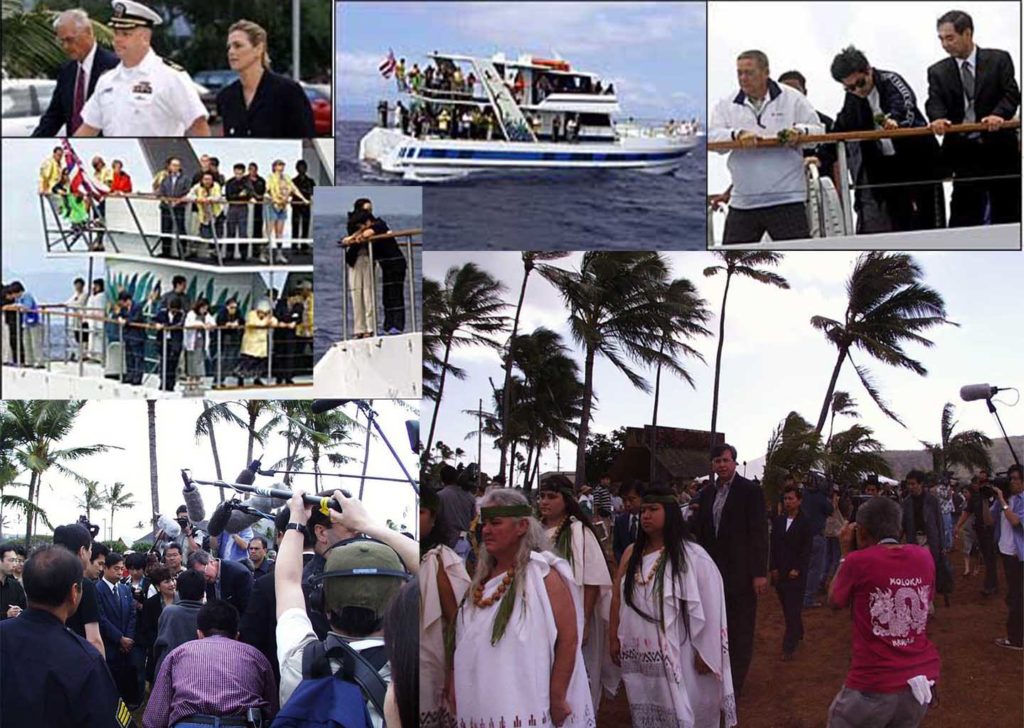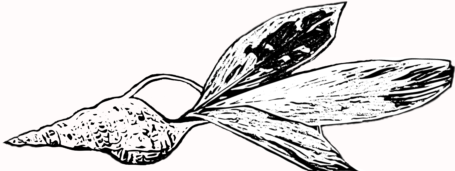
Ehime Maru & Ceremony in Hawaii
Aloha:
Hawai`i, Japan, and the U.S. military stationed in Hawai`i are locked in a tragic embrace over an accident in Hawaiian waters. What joins us is the sinking of an education vessel, the Ehime Maru, and casting into uncertainty the lives of nine seamen yet to be recovered, and other crew and family members traumatized by these sudden events.
Accompanying these traumatic events are widespread shock, anger, grief, shame, indignation, compassion, and pain. There is wide outcry for information, explanations, apology, assurances that such accidents
will never occur again, court martial, and damages appropriate to the tragedy.
As I listen to the concerns of Hawaii’s people, I hear an underlying expressions that while we are mere bystanders in this tragedy between a U.S. Naval Submarine and a Japanese training vessel, we ourselves are caught up in the tragic mood over events which occurred in our homeland. We have a sense of kuleana to help in relieving from this land and waters the pain which has formed and now remains. We have kuleana to aid in the recovery of such great imbalances in the human spirit suffered by the families, friends, and observers of these sad affairs.
I imagine how these men of the Ehime Maru and the people of Uwajima, Japan must be just as much people of the ocean as we are in Hawai`i. I ask, what would I want if we had our training ship, the Hokule`a, suddenly rammed and within 10 minutes, sunk, with only 26 of a crew of 35 recovered – sons, daughters, husbands, wives, loved ones of our Hawai`i! Had such a tragedy occurred in foreign waters, I would not demand or even ask for, but would be greatly comforted by and appreciative of a public expression of caring by the people of that land. And in those thoughts, I wish to share with you what has come
to my mind.
I believe we do have an opportunity to provide a small measure of comfort to those who have felt the weight of this tragedy. Without becoming entangled with national or local politics, fault finding, or anger, we could, through simple ceremony, demonstrate our caring for all those wrapped in this tragedy. Can we organize to have such a ceremonial demonstration, led by the Hokule`a or another of our training vessels from the Polynesian Voyaging Society, sail to the approximate spot off Diamond Head, where this accident occurred, and hold a brief Hawaiian and Shinto ceremony, followed by the laying of wreaths upon the waters?
This ceremony should not be a funeral. It is an expression of comfort and safe journey for all our souls, especially of those seamen of the Ehime Maru still unrecovered, those traumatized from the collision at sea, the families, loved ones,
friends and observers. It is a pathway to express one’s sorrow, for many people who are caught up in a legal/political/military system which remains locked in a mind-set of rights, due process, investigation and inquiry and silence. It is a ceremony to remind all of us of how tentative life is.
As I imagine this ceremony, I see a Kumu Hula, Keola Lake perhaps, offering an appropriate `oli as he takes charge of the Hawaiian protocol, accompanied by another educator, Rev. David Ka`upu of Kamehameha Schools. I see Kupuna Keli`iokekai Paulo and Eddie Ka`anana of the fishing village of Miloli`i, two teachers of our youths for many years, in the art of `Opelu fishing, joining in the ceremony. Who the particular individuals are is not important, but they stand as the symbols of Hawaii’s particular connection with the people of Uwajima, Japan, of educators, of sea people, of the common experiences of the nature of the sea. A crew for the Hokule`a would also be joined by a priest of the Shinto tradition with particular association with the forces of the sea. One or more representatives of Japan may also want to join. Canoe clubs may also join in this small ceremony.
From the lookout at Diamond Head, or from the seashore, those crew members of the Ehime Maru, and families (who are not mentally and physically drained by the time of such ceremony) could observe the ceremonies out at sea.
Possible?
It seems to me, the ceremony would be simple. The difficulty is in the organizing with taste, with class, with sensitivity, with proper protocol, and with correct timing.
This ceremony should not be converted into a water show, a tourist attraction, and a “media event” but must always maintain the solemnity and sensitivity to the recent experience. It should be done only upon consultation with and consent from those most suffering from these events, probably through the Japanese Counsel in Hawai`i. It should be well organized, and this can only be done with the cooperation of many people (and businesses) pulling together in the spirit of laulima.
It is not cool to put forth a plan and then back out. Nor is it wise to cram more stuff into a limited framework of time where everything must be done but nothing done well. I believe such a ceremony would be appropriately carried forth within a week, most likely this week-end. Yet, without staff and an upcoming trial on Hawai`i on Thursday, I realize I am not the one to stand at the helm. Someone else or very small committee should take charge. I believe this ceremony should carry a clearly distinctive Hawaiian and Japanese cultural flavor. It should be inclusive of all people needing a pathway to relieve their sorrow.
Can you help?
Can you join a planning team on Tuesday evening, 6:30 p.m. Hale Na`au Pono (Wai`anae Coast Community Mental Health Center – Weinberg Building), 86-226 Farrington Hwy., Wai`anae? Please respond immediately.
Please call or reply immediately. Poka Laenui 697-3045, fax 696-5516, or through email reply.
Aloha a hui hou.
